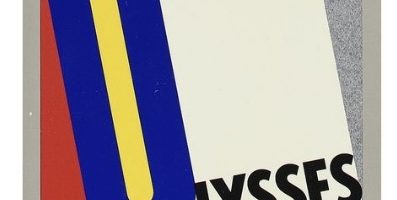Growing up, we learned a lot from TV, but we also just had a lot of kid fun with locally produced shows.
Read More
KidTV: When the outdoors moved inside


Growing up, we learned a lot from TV, but we also just had a lot of kid fun with locally produced shows.
Read More
Alright settle down there, Retros. Yes, let us talk about the television, the telly, the boob tube. Now, before you all start clutching your pearls and wailing about the “vast wasteland” that is television, à la Newton Minow, hear me out. Because amongst the endless parade of reality trash and brain-rotting sitcoms, there were gems. Glittering diamonds in the rough, that somehow managed to inspire this cynical lump of protoplasm you are now reading from.
First up, there was this little show called “Monty Python’s Flying Circus.” Now, I know, I know. Groundbreaking. Hilarious. Influential. Blah blah blah. But here’s the thing: Monty Python wasn’t afraid to be absurd. They took the holiness out of absolutely everything, from stuffy institutions to social norms to walking funny. It was like a comedy explosion that detonated right in the middle of my teenage angst. Suddenly, questioning everything, ripping the sacrosanctness out of all authority, and reveling in the nonsensical – it all seemed not just permissible, but encouraged. It was a rebellion I could get behind while sprawled on the sofa, stuffing my face with chips and salsa.
And then there was “The X-Files.” Now, this wasn’t your typical FBI cop show. Sure, there were shootouts and spooky thrills, but there was also this undercurrent of questioning authority, of searching for the truth that was just out of reach. It planted a seed in my grumpy little adolescent head – a seed of curiosity, a yearning to dig deeper, to challenge the status quo. Plus, it had Scully and Mulder, the ultimate will-they-won’t-they tension that kept me glued to the screen even during their commercials for hemorrhoid cream. (Though, let’s face it, those were unintentionally hilarious too.)
Look, I’m not gonna pretend these shows turned me into Mother Teresa or Albert Einstein. But they did spark something. Monty Python showed me the power of humor, of questioning the status quo, and of not taking life too seriously. The X-Files instilled a sense of curiosity, a desire to explore the unexplained. And hey, maybe that’s not a bad takeaway from a few nights parked in front of the Dopamine Box, scoffing down microwaved burritos.
Now, before you all get too misty-eyed, let’s not forget the sheer amount of rubbish that television spews out. But amidst the trash heap, there are these occasional nuggets of inspiration. So next time you find yourself flicking through the channels, bored out of your gourd, don’t despair. You never know when you might stumble upon a show that’ll make you laugh, think, or maybe even question the very fabric of reality. Just remember to mute the commercials. Unless, of course, they’re selling hemorrhoid cream. Because frankly, those commercials are a comedic goldmine.
–30–

Ulysses
Please don’t think I’m an insufferable literary snob if I tell you I’ve read Ulysses several times. But in fact I have, and I think it’s indeed a masterpiece, and not at all as hard to read and understand as you may have been led to believe. (See My Love Affair with James Joyce)
Now I must I confess I first read James Joyce’s celebrated novel in a college course with a wonderful professor guiding us through it – and I became addicted. I went on to read all his works – although I couldn’t get through his experimental novel Finnegan’s Wake – that one IS near impossible to read!
Ulysses, as you may know, follows a fictional Jewish Dubliner named Leopold Bloom through a June day in 1904 as he makes breakfast for his wife Molly; attends a funeral; works as an advertising canvasser; buys a bar of lemon soap; eats lunch in a crowded pub; visits a maternity hospital, a church, and a museum; watches a fireworks display; almost meets his wife’s lover; does meet a young history teacher named Stephen Dedalus, the son of an acquaintance, and invites him home; and finally gets into bed with a sleepy Molly.
But Joyce does more than walk us through the plot of the novel – he brings us inside the hearts and minds of Bloom and the other characters he meets in his Dublin wanderings. And Joyce constantly astounds us with his wit and his encyclopedic knowledge of languages, and philosophy, and science, and history, and so well understands the complexities of human nature.
Ulysses inspired me to read more great literature and to write more stories myself. Called the best book of the 20th century, it‘s been in print since its publication in 1922, and has been translated into over 20 languages including Icelandic, Chinese, and Arabic – a testament to Joyce’s skill and vision, and to the universality of the story he tells.
If you haven’t read Ulysses, I urge you to get a copy and be inspired!
St Stephen’s Green, Dublin
– Dana Susan Lehrman

TV is enjoyable when it provides for personable entertainment, reflection. and curiosity. Not when it stirs up meaningless fantasy. and fears.
Read More